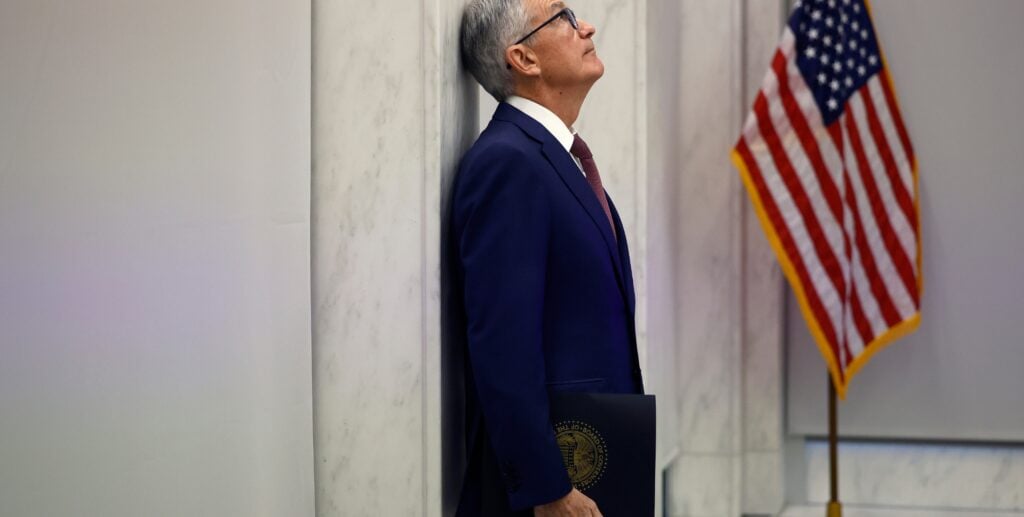Out of the last 13 meetings, the Federal Open Market Committee (FOMC) has opted to raise the federal funds rate a whopping 11 times. Now, we’re getting signals from investors and the Fed themselves that the tides could be turning.
The interest rate hikes over the last year have led to a run-up in savings account and CD rates and, less happily, rates on mortgages and other loans, too. Since March of last year, the average 30-year loan rate has climbed from under 4% to the upper 7% range. (Freddie Mac’s data has the average sitting at 7.63% as of Oct. 19.)
Rates on 15-year loans are up, too, now averaging nearly 7%, and even short-term ARM rates have soared. Mortgage News Daily puts the average rate at 7.29% on 5/1 ARMs.
While they’re certainly not the highest rates the U.S. has seen, they are eating into affordability quite a bit. The average new mortgage payment hit nearly $2,200 in August.
Related: The Math Behind Mortgage Rates and Why They’re Staying Put
Could a Fed rate bump later this month cause those payments to spike even more? Here’s what to expect from the central bank’s meeting this month—and beyond.
An Extended Pause
The Fed paused its rate hikes last month but said future rate hikes could still be around the corner. According to the majority of FOMC members, at least at the time of the last meeting, at least one more rate increase is required for 2023—and potentially more into next year.
But it seems like that rate hike won’t come at the group’s October meeting. In fact, Federal Reserve Chair Jerome Powell indicated as much at a recent speaking engagement, and Fed Gov. Christopher Waller even went so far as to say it out loud.
“I believe we can wait, watch, and see how the economy evolves before making definitive moves on the path of the policy rate,” Waller said at a European Economics & Financial Center Seminar last week.
Investors agree, too. According to the CME Group’s FedWatch Tool, there’s an over 98% chance the Fed holds its benchmark rate steady at 5.25%-5.50% when its Oct. 31-Nov. 1 meeting concludes.
Watch and Wait
Even if the Fed does keep its rate steady this month, that doesn’t mean it won’t raise it eventually. It also doesn’t mean that rates will begin to drop anytime soon.
“We are attentive to recent data showing the resilience of economic growth and demand for labor,” Powell said at the Economic Club of New York. “Additional evidence of persistently above-trend growth, or that tightness in the labor market is no longer easing, could put further progress on inflation at risk and could warrant further tightening of monetary policy.”
There are other factors that could influence the Fed’s moves, too—political uncertainty chief among them. Not only could the ongoing conflict in Israel impact things, but a looming government shutdown—not to mention the lack of a House speaker—will factor in as well.
As Powell put it, “Geopolitical tensions are highly elevated and pose important risks to global economic activity.”
There’s also the ongoing risk of a recession, though according to a new survey, economists are no longer in consensus on this one. Only 48% said they think a recession is imminent in the next 12 months.
These issues could be why the chance of another rate hike jumps for the Fed’s December meeting. According to CME Group, the odds currently sit around 25% for a rate bump from 5.50% to 5.75% (plus a 2% chance of a rate decrease).
All this to say: While there’s a good chance the Fed will hold steady at its meeting this month, beyond that, things are still unclear.
“A range of uncertainties, both old ones and new ones, complicate our task of balancing the risk of tightening monetary policy too much against the risk of tightening too little,” Powell said. “Given the uncertainties and risks, and given how far we have come, the committee is proceeding carefully.”
As for the markets, they’ll welcome the news of a continued pause, but we’re all still bracing for another hike. As for real estate, it may not change much, even with another hike. The status quo remains the same: low inventory, waning demand, high prices, and the “lock-out” effect.
The only thing that will probably change that is when rates begin to fall.
Ready to succeed in real estate investing? Create a free BiggerPockets account to learn about investment strategies; ask questions and get answers from our community of +2 million members; connect with investor-friendly agents; and so much more.
Note By BiggerPockets: These are opinions written by the author and do not necessarily represent the opinions of BiggerPockets.





















Discussion about this post